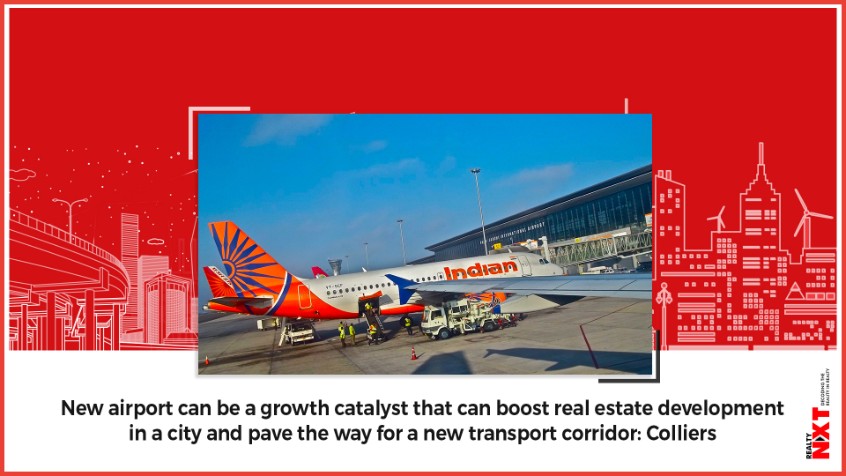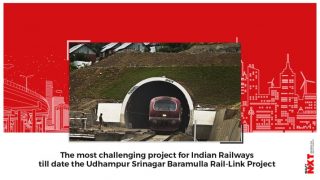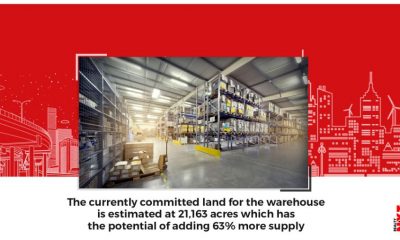Through the expansion and modernization of airports, Colliers believes India can achieve tremendous growth in tourism, hospitality, leisure, recreation and many other services.
Colliers International (NASDAQ: CIGI; TSX: CIGI), leading diversified professional services and investment management firm, today released its Airport Real Estate on a new runway report. This report details the concept of privatization of airports, the importance of non-aero revenue in airport operations, real estate best-use of landside developments, and, more importantly, the Indian aviation sector’s growth potential.
Airports are considered as one of the key drivers for a global or local economy. A new airport has the potential to change the dynamics of a destination in terms of increasing its connectivity to other parts of the world, bringing in revenue, facilitating trade logistics and improving commutes.
From the perspective of a city, a new airport can be a growth catalyst that can boost real estate development and pave the way for a new transport corridor. The potential of India’s airport sector is largely unfulfilled. Through the expansion and modernization of airports, Colliers believes India can achieve tremendous growth in tourism, hospitality, leisure, recreation and many other services.
“The positive takeaway in today’s context would be the slowdown in aviation sector has created a sense of urgency in unlocking the real estate potential of Airports in India. While some of the Airports are holding prime lands of the city, many of the others have the potential to open up new growth corridors in their respective city, “says Subhankar Mitra, Managing Director, Advisory Services at Colliers International India.
Revenue from airport real estate
The revenue from airport real estate is in range of 25-40% of total revenue for an airport. Sometimes the airport owner does JV for such developments. Land at airports can also provide additional advantage in the raising of funds for modernization and upgrading an airport.
Importance of landside development
At present in India, a few Greenfield airports are either at the proposal stage or already under development. These airports have huge real estate potential due to development possibilities, ever-increasing passengers and global connectivity.
The development should be in line with airport ancillary industries and economic activities that can boost regional economic growth. The locations of the proposed airports are located away from the cities and it requires passengers to spend more in non-aero activities i.e. stay overnight at hotels to catch early morning flights or spends on retail would proportionately increase in context to passenger spending more time at the terminal.
Proposed airports
Most of the airport lands are on leasehold tenure. The planning and norms of development should consider the interest of investors participating in developing airport real estate. Also, the development should be proposed in such a way that it achieves the highest satisfaction level of passengers traveling, this may assure the maximum revenue from the real estate developed.
The overall development should consider new asset classes, occupiers and type of developments – required to act as a catalyst for faster growth and urbanization. The proposed development should not be competing with the existing economy of the respective city nor affecting the life of local stakeholders and businesses in a negative way.
Landside developments in existing airports
In 2019, the Government of India allotted six airports to a private operator to maximize the revenue, these were Ahmedabad, Jaipur, Lucknow, Guwahati, Thiruvananthapuram, and Mangalore. A further six more airports are now selected for privatization, Amritsar, Varanasi, Bhubaneshwar, Trichy, Indore and Raipur.
The operator needs to understand the demand generated from the respective airport to develop real estate with the right model that can get maximum revenue with the highest and best use of the property.
Future of airport development
The operators need to focus more on non-aero revenue. Not only in the terminal but also understand the overall regional context of the airport by developing ancillary real estate i.e. logistic parks, smart warehousing, industry-specific clusters like textile parks, film cities, institutes, healthcare. These developments should not just only be dependent upon the passenger traffic of the airport but also with reference to inherent demand generated from the respective cities.
The authorities should adopt a more practical approach while searching for private operators. They need to share the risk equally with a private partner by emphasizing more on revenue share rather than upfront premium. More innovative models need to be developed with longer tenure. Additional lands for real estate development to increase non-aero revenue could be a catalyst for bidding by the operators.
ALSO READ: Power Mech Projects Receives Letters of Award Worth Rs.1068.36 Cr




























